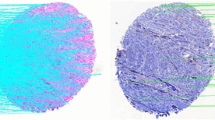Abstract
A general class of minimum distance estimators for continuous models called minimum disparity estimators are introduced. The conventional technique is to minimize a distance between a kernel density estimator and the model density. A new approach is introduced here in which the model and the data are smoothed with the same kernel. This makes the methods consistent and asymptotically normal independently of the value of the smoothing parameter; convergence properties of the kernel density estimate are no longer necessary. All the minimum distance estimators considered are shown to be first order efficient provided the kernel is chosen appropriately. Different minimum disparity estimators are compared based on their characterizing residual adjustment function (RAF); this function shows that the robustness features of the estimators can be explained by the shrinkage of certain residuals towards zero. The value of the second derivative of theRAF at zero,A 2, provides the trade-off between efficiency and robustness. The above properties are demonstrated both by theorems and by simulations.
Similar content being viewed by others
References
Basu, A. (1993). Minimum disparity estimation: applications to robust tests of hypotheses, Technical Report, Center for Statistical Sciences, University of Texas at Austin.
Basu, A. and Lindsay, B. G. (1993). The iteratively reweighted estimating equation in minimum distance problems, Technical Report, Center for Statistical Sciences, University of Texas at Austin.
Beran, R. J. (1977). Minimum Hellinger distance estimates for parametric models,Ann. Statist.,5, 445–463.
Chung, K. L. (1974).A Course in Probability Theory, Academic Press, New York.
Cressie, N. and Read, T. R. C. (1984). Multinomial goodness-of-fit tests,J. Roy. Statist. Soc. Ser. B,46, 440–464.
Lehmann, E. L. (1983).Theory of Point Estimation, Wiley, New York.
Lindsay, B. G. (1994). Efficiency versus robustness: The case for minimum Hellinger distance and related methods,Ann. Statist. (to appear).
Rao, C. R. (1961). Asymptotic efficiency and limiting information,Proc. Fourth Berkeley Symp. on Math. Statist. Prob.,1, 531–546.
Silverman, B. W. (1986).Density Estimation for Statistics and Data Analysis, Chapman and Hall, New York.
Simpson, D. G. (1987). Minimum Hellinger distance estimation for the analysis of count data,J. Amer. Statist. Assoc.,82, 802–807.
Simpson, D. G. (1989). Hellinger deviance test: efficiency, breakdown points, and examples,J. Amer. Statist. Assoc.,84, 107–113.
Tamura, R. N. and Boos, D. D. (1986). Minimum Hellinger distance estimation for multivariate location and covariance,J. Amer. Statist. Assoc.,81, 223–229.
Author information
Authors and Affiliations
About this article
Cite this article
Basu, A., Lindsay, B.G. Minimum disparity estimation for continuous models: Efficiency, distributions and robustness. Ann Inst Stat Math 46, 683–705 (1994). https://doi.org/10.1007/BF00773476
Received:
Revised:
Issue Date:
DOI: https://doi.org/10.1007/BF00773476




